15 Classic Novels under 400 pages: Make your weekend with sweet feelings!

Table of Contents
ToggleImagine this: it’s a rainy Saturday, you’re holding a cozy mug, and you want a story that won’t take over your whole weekend. That’s where the classic books come in—titles like The Great Gatsby, The Stranger, and Animal Farm. They fit easily in a backpack, but they can hit you hard in the emotions. They take you from lively parties of the roaring twenties to dusty battlefields in the desert, all in less than 400 pages. You finish the last page and think, “Wow, that was fast… and it really packed a punch.” If you want to show off your love for classic literature without struggling with a huge book, these small gems are the ideal choice.
Further explore the best South American Novels
About some unknown sayings about classic novels
Classic novels under 400 pages show that outstanding stories can be told simply and powerfully. Jane Austen’s Pride and Prejudice is a clever and sharp look at love and class in Regency England. At 279 pages, it captivates with its wit and insight. In fact, if you are a book lover and enjoy reading, your mind becomes happily recharged on weekends or even every day! Don’t believe me? Then try now.
Harper Lee’s To Kill a Mockingbird (281 pages) is a gripping story about racial injustice and moral growth. It unfolds through the perspective of young Scout Finch, making it both relatable and impactful. Emily Brontë’s Wuthering Heights is a gripping story of obsession and revenge set against the wild backdrop of the Yorkshire moors. This 348-page novel breaks the mold with its intense and passionate narrative.
Shorter works like The Great Gatsby(180 page) and Of Mice and Men(107 pages) prove that depth and emotional impact aren’t tied to length. Their lasting charm comes from clear writing, memorable characters, and themes that stay with you long after you finish reading. They are ideal for those who seek depth without too much length.
Here we summarize 15 Classic novels which mostly under 400 pages. Stay tuned!
1.”Pride and Prejudice” by Jane Austen
- Year Published: 1813
- Publisher: T. Egerton, Whitehall
- Original Language: English
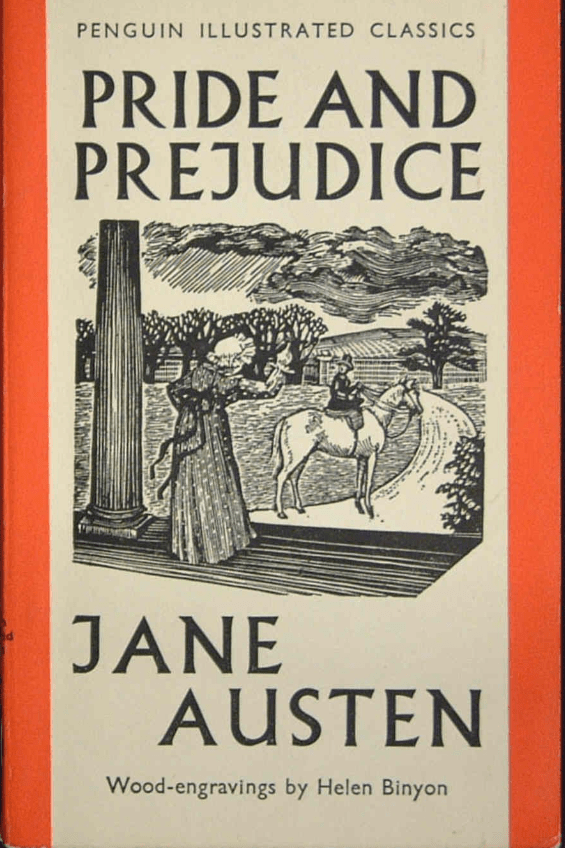
Summary
“Pride and Prejudice,” written by Jane Austen, is a classic novel set in the early 19th century in rural England. The story revolves around the character of Elizabeth Bennet, one of five sisters in a family with no male heir. The Bennets are part of the gentry class but face financial insecurity. The narrative explores themes of love, marriage, class, and, as the title suggests, pride and prejudice.
In general, the book is typically divided into three volumes, encompassing 61 chapters in total.
Elizabeth is intelligent, witty, and independent-minded, characteristics unusual for women of her time. Her life takes a turn when Mr. Fitzwilliam Darcy, a wealthy and seemingly arrogant gentleman, enters her social sphere.
Initially, Elizabeth’s prejudice against Darcy and his prideful demeanor lead to misunderstandings and mutual disdain. However, the story unfolds to reveal Darcy’s true character and his growing affection for Elizabeth.
Austen expertly weaves a tale of romantic misunderstandings and social commentary, highlighting the limited options available to women during the period. The novel is celebrated for its irony, wit, and astute insights into human behavior, making it a timeless classic in English literature. Austen’s portrayal of Elizabeth Bennet as a strong female protagonist was groundbreaking for its time and continues to inspire readers today.
2.”The Great Gatsby” by F. Scott Fitzgerald
- Year Published: 1925
- Publisher: Charles Scribner’s Sons
- Original Language: English

Summary:
F. Scott Fitzgerald’s “The Great Gatsby” is one of the most important books in American writing. It captures the spirit and contradictions of the Jazz Age, also known as the “Roaring Twenties.” The book takes place in fictional locales on Long Island called West Egg and East Egg. It’s about the mysterious and wealthy Jay Gatsby and his crazy love for the beautiful Daisy Buchanan.
Nick Carraway, a World War I soldier and Yale graduate from the Midwest, tells the story. It’s about decadence, idealism, resistance to change, social upheaval, and excess. Gatsby is known for his fancy parties and mysterious past. He is motivated by his love for Daisy, who is now married to the rich and cocky Tom Buchanan.
Fitzgerald does a great job of showing how the rich and famous live a fancy life, chasing pleasure for no reason, while also showing how their morals are falling apart and they don’t care about other people. The book explores the American Dream, both its promise and its illusion, and ends with disaster.
People love “The Great Gatsby” because it paints a lively picture of the 1920s, uses poetic language, explores themes that are still important today, and critiques the American dream. Even though the novel isn’t very long, it has had a considerable effect on American literature and is considered a classic.
3. “To Kill a Mockingbird” by Harper Lee
Year Published: 1960
Publisher: J. B. Lippincott & Co.
Original Language: English
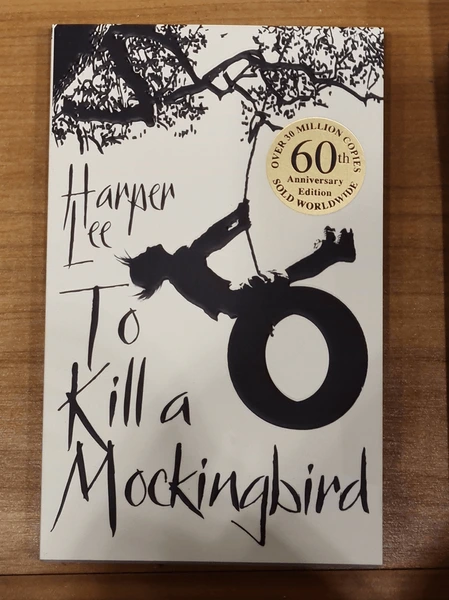
Pic credit: Shutterstock
Summary
“To Kill a Mockingbird,” written by Harper Lee, is a famous novel set in the 1930s in a small Southern town. The story is recounted from the perspective of Scout Finch, a young girl. Scout lives with her brother, Jem, and their widowed father, Atticus Finch, a reputable lawyer.
The story is famous for its warm and humorous portrayal of children’s lives and its profound exploration of racism and injustice. The novel’s key incident is Atticus Finch’s defense of Tom Robinson, a black man who was wrongfully accused of attacking a white woman. This case exposes the town’s racial prejudices, and Atticus, a believer in justice and equality, faces tremendous hurdles and criticism for defending Tom.
Scout Jem and their friend Dill find themselves fascinated and puzzled by the events unfolding in their town. They learn severe lessons about racism’s realities, as well as the complexities of human nature and society. Through their father’s example and their own experiences, they gain a deeper understanding of empathy and moral integrity.
The story also delves into subjects such as childhood innocence, the value of moral education, and the coexistence of good and evil. Harper Lee’s portrayal of the Finch family’s trials and the injustices they encounter has made “To Kill a Mockingbird” a beloved and timeless story that speaks to readers of all ages.
4.”1984″ by George Orwell
- Year Published: 1949
- Publisher: Secker & Warburg
- Original Language: English
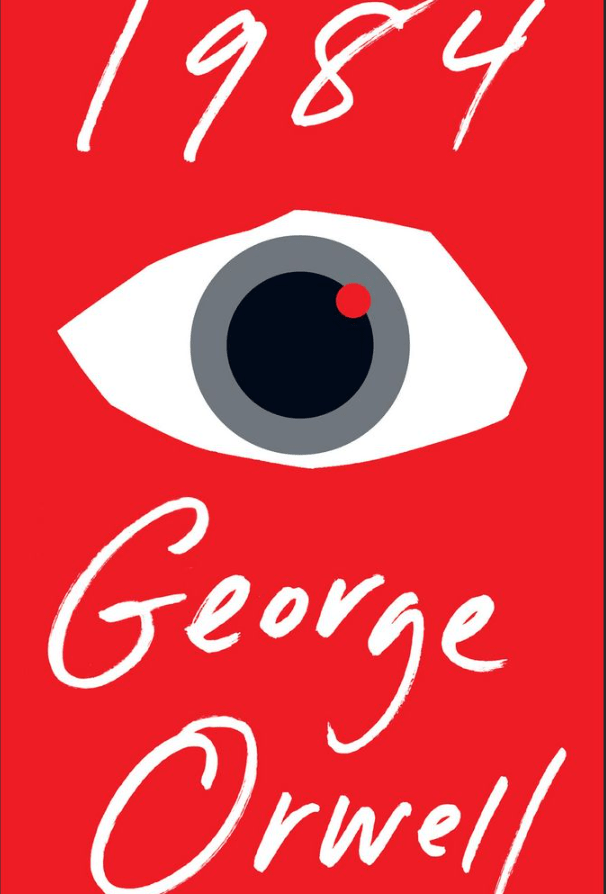
Summary:
“1984,” by George Orwell, is a deep and vital dystopian story that is often called one of the most important books written in the 20th century. The book is set in a totalitarian society in the future and paints a scary picture of a place where people have no freedom, history is changed to fit the needs of a cruel government, and the truth is whatever the Party says it is.
The story is about Winston Smith, who is a low-level member of Oceania’s ruling Party. The Party, which is run by Big Brother, who is everywhere and knows everything, controls everything, including what people think, say, and do. The Thought Police make sure everyone follows the rules, and anyone who doesn’t is severely punished.
Winston privately wants to rebel against the government even though he works at the Ministry of Truth, where he changes historical records to fit the Party’s propaganda. He starts an illegal relationship with Julia, who is also a rebel and starts to think about radical ideas. No matter what kind of revolt there is, it is hazardous because of the strict governing of the Party and the constant surveillance.
Totalitarianism, monitoring, censorship, and changing the truth are some of the ideas that “1984” explores. Orwell’s picture of a world where totalitarians rule over all aspects of life, even people’s thoughts and feelings, is a strong warning against power abuse and the loss of personal freedom. Ideas and words from the book, like “Big Brother,” “doublethink,” and “thoughtcrime,” have become part of everyday speech. It shows that the book is still essential when people talk about freedom, privacy, and government control.
5.”The Adventures of Huckleberry Finn” by Mark Twain
Year Published: 1884
Publisher: Chatto & Windus / Charles L. Webster And Company
Original Language: English
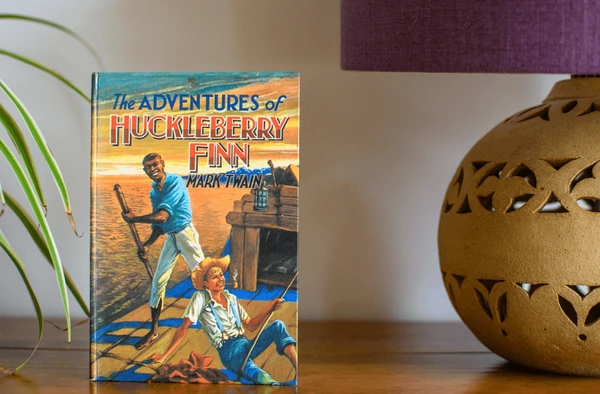
Pic credit: Shutterstock
Summary:
A classic in American writing, “The Adventures of Huckleberry Finn” by Mark Twain, is often called one of the best novels ever written in the United States. Twain’s older book, “The Adventures of Tom Sawyer,” comes right after this one. It’s about a rebellious boy named Huckleberry Finn who fakes his death to escape from his alcoholic father.
After getting away, Huck is on a raft with Jim, another runaway slave, going down the Mississippi River. As they travel down the river, the book vividly describes the people and situations they meet. It gives a complex and often satirical view of the South before the Civil War. Huck’s innocence and practical morals are used by Twain to look at and criticize racial prejudices, social norms, and the so-called “civilized” society of the time.
“The Adventures of Huckleberry Finn” is famous for using authentic regional dialects and being honest about moral and social problems, like how racism is built into slavery. Twain’s unique sense of humour, colorful characters, and ability to show profound human truths through the eyes of a young boy make the story stand out. The book had a massive impact on American literature, and many people still read and study it for both its historical importance and its enduring literary qualities.
6.”Wuthering Heights” by Emily Brontë
Year Published: 1847
Publisher: Thomas Cautley Newby
Original Language: English

Pic credit: Shutterstock
Summary:
The well-known book “Wuthering Heights” by Emily Brontë, came out for the first time in 1847. The story is about Catherine Earnshaw’s strong, almost evil love for Heathcliff, an orphan who comes to live with her family in Wuthering Heights. The story takes place on the moors in Yorkshire over two generations.
The story is about love, revenge, and the supernatural. He gets into a lot of trouble because he loves Catherine and wants to get back at people he thinks have hurt him, like Catherine’s brother and Edgar Linton, who will marry her.
People love this book because it has a complicated story that is told from different points of view over a long time. People love it because it’s scary and dark, and because it explores morals, social class, and human nature.
7.”The Catcher in the Rye” by J.D. Salinger
Year Published: 1951
Publisher: Little, Brown and Company
Original Language: English
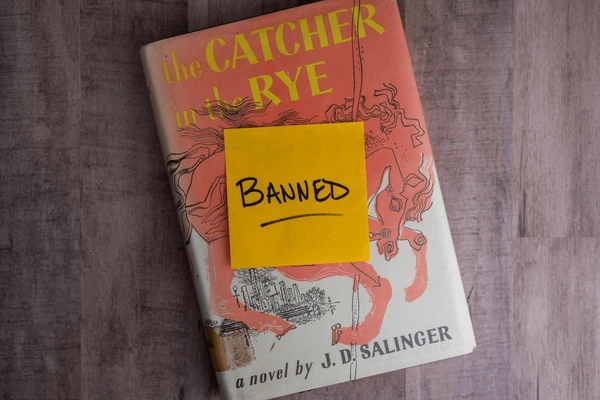
Summary:
“The Catcher in the Rye,” a book by J.D. Salinger, is a deep and moving look into the pain and rebellion of being a teenager. Holden Caulfield, a teenager from New York City who has been kicked out of his prep school, tells the story. As the book progresses, Holden’s deep unhappiness and confusion about the adult world become increasingly evident. This development paints a vivid picture of teenage disappointment.
Holden is at his new school, Pencey Prep, when the story starts. He has been kicked out for getting bad grades. His first choice is to stay alone in New York City for a few days instead of going home. During this time, Holden thinks about different events and people he has met that show how uncomfortable he is becoming with the adult world, which he views as fake and shallow. His interactions and views show how deeply cynical and alone he feels.
Holden’s happy thoughts of his late younger brother, Allie, are one of the most moving parts of the book. Holden is deeply affected by Allie’s death, which makes him feel even more alone and disconnected from the world around him. Holden also feels a strong need to protect his sister Phoebe and wants to keep children from losing their innocence, which shows how hard it is for him to find purity in a world he sees as dirty.
“The Catcher in the Rye” is a metaphor for Holden’s desire to keep kids from having to deal with the problems and bad things that come with being an adult. He imagines himself standing in a rye field near a cliff and grabbing kids who are about to fall off. This way, he will keep them from losing their innocence. The main idea of the book is beautifully summed up in this metaphor: how hard it is to keep childhood innocence alive in a world that seems cruel and shallow so often.
Overall, “The Catcher in the Rye” is a timeless look at how teens can lose hope and how hard it can be to become an adult. Holden Caulfield by J.D. Salinger is a famous work of American literature that many people can relate to because of how well Salinger writes about the trouble and confusion of being a teenager.
8.”A Tale of Two Cities” by Charles Dickens
Year Published: 1859
Publisher: Chapman & Hall
Original Language: English

Summary:
After the French Revolution, in London and Paris, Charles Dickens’s “A Tale of Two Cities” takes place. This book is about the battles of the French peasants, the cruelty of the French nobility, and the chaos of the French Revolution. The book shows the lives of several English and French characters.
A French nobleman named Charles Darnay and a disreputable English lawyer named Sydney Carton are the leading players. Darnay leaves his cruel family in France and goes to London. But Carton, who doesn’t have any goals, falls in love with Lucie Manette, who is also in love with Darnay. The father of Lucie, Dr Manette, was unfairly confined in the Bastille for 18 years.
The book shows how different life is in London and Paris during the violent revolution. It explores themes like rebirth, change, and how the past affects the present. The book vividly portrays legendary scenes like the taking of the Bastille and the Reign of Terror, where many people met their deaths.
In France, authorities catch Darnay and sentence him to death because he comes from a noble family. Carton gives up a lot because he loves Lucie. In secret, he goes to jail and stands in for Darnay in front of the guillotine, saving his life.
“It is a far, far better thing that I do than I have ever done; it is a far, far better rest that I go to than I have ever known,” Carton says as he heads to the guillotine at the end of the book. These words demonstrate how the novel portrays its themes of loss, redemption, and the opportunity for change. This story by Dickens shows how complicated and sad the French Revolution was through these people and events.
9.”Dracula” by Bram Stoker
Year Published: 1897
Publisher: Archibald Constable and Company (UK)
Original Language: English
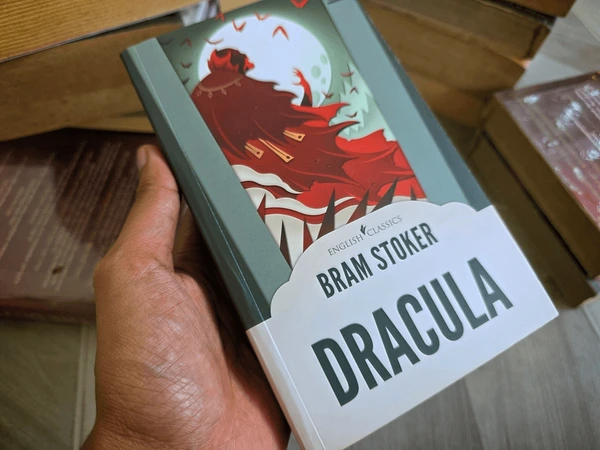
Summary:
The famous horror novella “Dracula” by Bram Stoker came out in 1897. There was a fight between Count Dracula and a small group of people led by Professor Abraham Van Helsing when Dracula tried to move from Transylvania to England to spread the curse of the dead.
Jonathan Harker, a young English lawyer, goes to Castle Dracula in Transylvania at the beginning of the book to help Count Dracula with a real estate deal. Harker quickly figures out that he is locked up in the house and that Dracula is a vampire. Back in England, Harker’s fiancée, Mina, and her friend Lucy are having some strange things happen. Lucy gets sick, which is a sign that a vampire is nearby.
When Dracula arrives in England, he starts to hurt Lucy. Lucy’s condition gets worse despite the attempts of Dr John Seward and Arthur Holmwood, Lucy’s fiancé. They call on Professor Van Helsing, who is an expert in strange illnesses and can spot the signs of vampires. Lucy turns into a vampire, and the group kills her in the end to save her life.
While the group is sad about Lucy’s death, they learn that Dracula is also after Mina. They work together to protect her and find Dracula, with Van Helsing in charge. As the group races against time to catch Dracula, the story moves back and forth between England and Transylvania. They learn about vampires’ good and bad points and use this information to help them in their search.
In the climax, the group goes to Dracula’s house to face him. They kill him right before it gets sunset, which would have given him time to get stronger again. Dracula’s death frees Mina from his curse. At the book’s end, there is a sense of victory as the group defeats evil and restores order. “Dracula” is a story about good vs. evil and how love and friendship can stand the test of time.
The writing in “Dracula” recalls the style of the late 1800s. However, it is still easy to understand and engaging for modern readers. It makes the book a timeless classic in the horror genre.
10.”Frankenstein” by Mary Shelley
Year Published: 1818
Publisher: Lackington, Hughes, Harding, Mavor, & Jones
Original Language: English
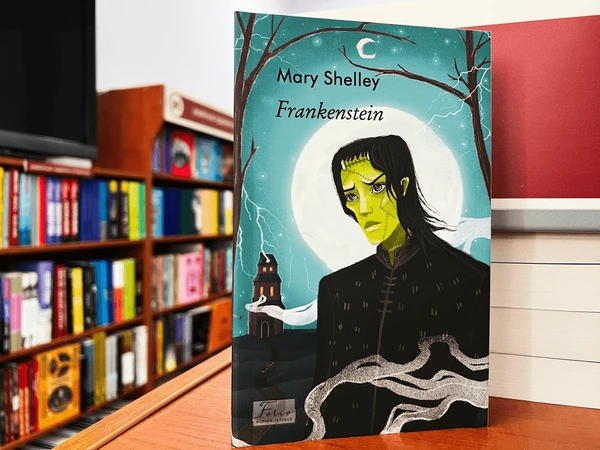
Summary:
Mary Shelley’s “Frankenstein” is a thrilling book that explores the consequences of attempting to become God. Written in 1818, it tells the story of Victor Frankenstein, a young scientist who does an unusual experiment and ends up making a horrible creature.
Further explore the reasons for Victor Frankenstein’s inspiration for creating life
Victor Frankenstein is obsessed with finding out how life works, so he tries to do experiments on how to bring the dead back to life. In a secret lab, he assembles a creature from parts of different corpses. He uses electricity to bring it to life. But when Victor sees how horrible the thing looks, he is scared and runs away, leaving his creation behind.
When the creature is left alone and confused, it tries to fit in with other people. On the other hand, it looks scary to everyone it meets. It makes the creature feel alone, sad, and finally angry and hateful toward Victor, who made it and put it in a world that doesn’t like it.
The creature learns to talk and read, and then it approaches Victor and urges him to make it a female friend. Victor agrees at first, but then he kills the female monster because he is afraid of what will happen if he makes a race of monsters. In revenge, the creature kills Victor’s closest friend and later his bride, Elizabeth, on their wedding night.
At the end of the story, there is an exciting chase into the Arctic, where Victor swears to kill his creature. Victor tells Robert Walton, the captain of a ship, his sad story. Walton finds Victor tired and close to dying. Victor ends up dying in the end, and the creature, feeling bad about what it did, disappears into the icy wilderness, determined to kill itself.
“Frankenstein” is a strong story about ambition, being responsible, and what happens when you mess with nature’s rules. It makes me think deeply about the boundaries of science and what it means to be human. This classic book is still an essential part of Gothic literature, and it has been the basis for many versions and new takes on the story.
11.”The Picture of Dorian Gray” by Oscar Wilde
Year Published: 1890
Publisher: Lippincott’s Monthly Magazine
Original Language: English
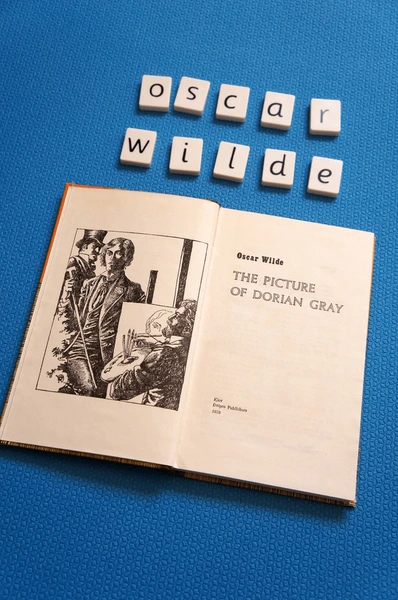
Summary:
Oscar Wilde’s “The Picture of Dorian Gray” is an exciting book that talks about ego, moral decay, and the beauty search. Published in 1890, it tells about a young man named Dorian Gray, whose portrait ages while he stays young and beautiful. It causes a chain of bad things to happen.
Dorian Gray is a young guy who is both beautiful and naive. The talented artist Basil Hallward paints a portrait of him. Dorian’s beauty enchants Basil, and he thinks that Dorian is his best work. During the painting sessions, Dorian meets Lord Henry Wotton, a friend of Basil’s, who impresses Dorian with his hedonistic worldview. Lord Henry says that the only things that are worth seeking in life are beauty and sensual pleasure.
Some of Lord Henry’s ideas have made Dorian wish that he could stay young and beautiful forever while his picture gets older. Somehow, his wish comes true. As Dorian indulges in a life of excess and immoral joys, his portrait starts to age and become less moral, which is a reflection of what he has done.
Dorian is getting more and more upset about how the picture is changing over time. He keeps it hidden in his attic so no one else can see how his evil soul shows up in the world. Even though his appearance doesn’t change, guilt and fear constantly haunt Dorian for his wrongdoings, including betrayal and even murder.
The most important part of the book is when Dorian destroys the portrait because he thinks it is the cause of all his troubles. He stabs the painting out of anger and despair. Dorian is found dead on the floor by the housekeepers. He looks old and worn out. However, the portrait returns to its natural state, showing Dorian as a young, naive man.
“The Picture of Dorian Gray” is a strong story about how vanity and uncontrolled desires can lead to bad things. It is a cautionary story about what happens when you don’t take moral responsibility for your actions and the fall that comes with living a life entirely of excess and superficiality. This book has been a classic for a long time because it has a mix of Gothic horror and philosophical thoughts about what beauty and morals are.
12 . Madame Bovary” by Gustave Flaubert
Year Published: 1856
Publisher: Revue de Paris (serialized)
Original Language: French
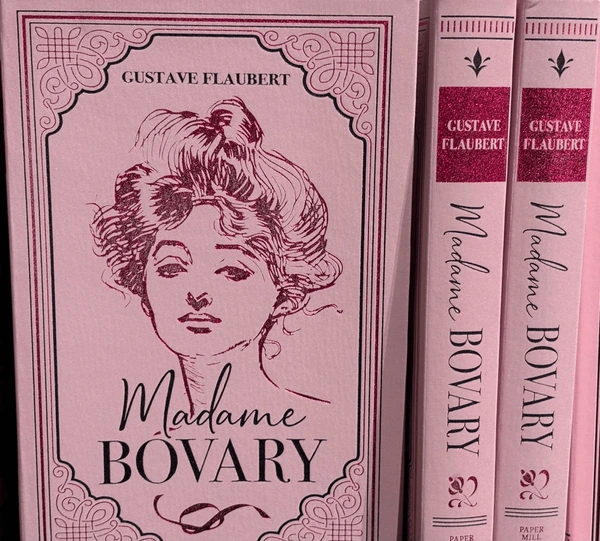
Summary:
Gustave Flaubert’s “Madame Bovary” is a groundbreaking book about a young woman whose dreams and wishes clash with the everyday things that happen to her. It was published in 1856 and is often considered a masterpiece of realist literature because it shows how tragic it can be to have escape dreams and wants that you can’t have.
Emma Bovary is the main character of the story. She is a young woman with romantic ideas who married Charles Bovary, a simple and kind country doctor. Emma quickly grows bored and unhappy with her marriage and life in the country. Because of the romance books she read when she was a child, she dreamed of a more exciting and passionate life. She doesn’t like her husband’s adoration or how quiet their country life is.
To escape her boredom, Emma engages in two extramarital affairs. She first dates Rodolphe, a wealthy farmer, but he breaks up with her in the end. After that, she dates Léon, a young law clerk, but their relationship also ends badly. Emma’s search for love and energy through these relationships only brings her short-term joy and, in the end, more sadness.
Along with her love adventures, Emma spends a lot of money to live the fancy life she has always wanted. She takes on huge bills that Charles needs to learn about. Because she spends money without thinking, the family is in financial problem and could lose everything because of her careless spending.
At the end of the book, Emma does something awful because she is overwhelmed by her bills, disappointed that her lovers have left her, and stuck in a life that doesn’t make her happy. She kills herself by taking arsenic because she thinks that death is the only way out of her pain. At the end of the book, grief causes Charles’ death, and their daughter goes to live with a poor cousin.
“Madame Bovary” is a deep look at the risks of having high hopes and wanting things that are out of reach. The book by Flaubert is an attack on romantic idealism, which can destroy oneself. It’s the sad story of a woman’s search for excitement that is out of her reach and the terrible things that happen to her and the people around her because of it.
The book has had a significant impact on many people. It continues to speak to us about the human situation powerfully and timelessly.
13.”The Adventures of Sherlock Holmes” by Arthur Conan Doyle
Year Published: 1892
Publisher: George Newnes Ltd
Original Language: English
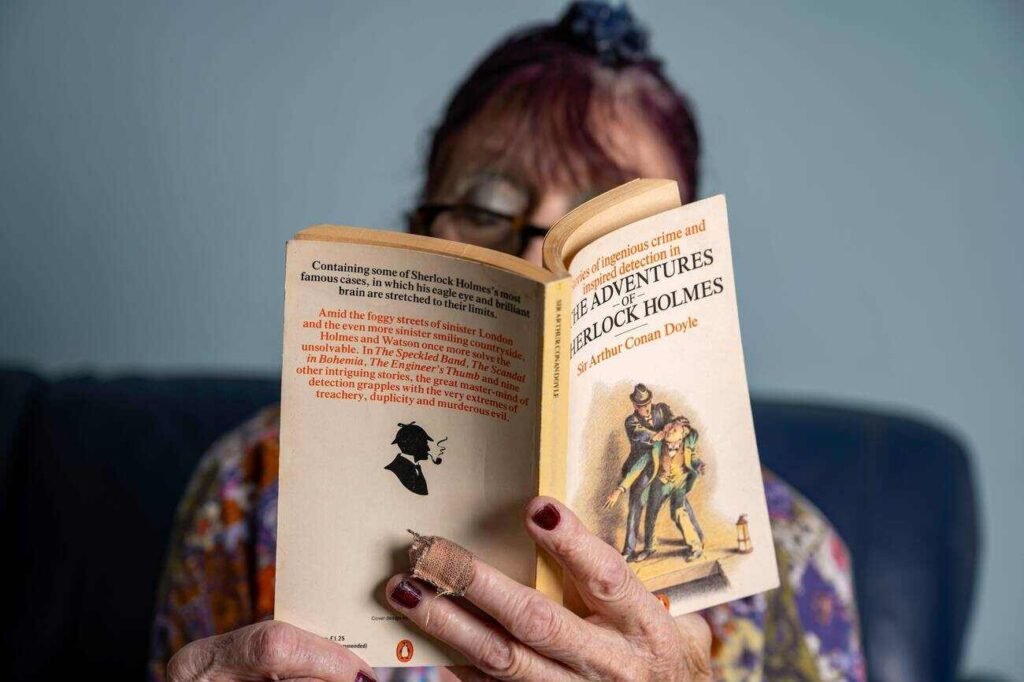
Summary:
“The Adventures of Sherlock Holmes” by Arthur Conan Doyle is a fascinating collection of short stories about Dr. John Watson, Sherlock Holmes’ loyal friend, and other great detectives. This collection of twelve interesting detective stories, set in Victorian England, was first released in 1892
The main character, Sherlock Holmes, is a great detective who is known for being able to solve complex cases by carefully observing them and using logic. He is a consulting detective in London and helps the cops a lot of the time. A former military doctor named Dr. John Watson is Holmes’ close friend and tells most of the stories. Their friendship and ability to work together is a big part of the series, and it makes solving each case interesting.
Each story in the book has its mystery, from strange disappearances to complicated crimes. Holmes carefully solves each case because he has a sharp mind and good reasoning skills. He often finds clues that other people miss. Dr. Watson’s medical background and practical approach make his methods stronger, and the two of them work together to solve the riddles.
“Some of the most notable stories in the collection include ‘A Scandal in Bohemia,’ where Holmes encounters the clever Irene Adler, and ‘The Adventure of the Speckled Band,’ about a strange death, which are two of the most interesting stories in the collection. Other stories, like “The Adventure of the Blue Carbuncle” and “The Adventure of the Red-Headed League,” show how creatively Holmes can solve strange and complex cases.
“The Adventures of Sherlock Holmes” is more than just a collection of mystery stories. It’s also a vivid picture of Victorian London, with its foggy streets and diverse characters of people. The stories are fun for a lot of different kinds of readers because they have mystery, action, and humor in them. With his unique personality and sharp mind, Sherlock Holmes has become a famous character in fiction. This collection is still trendy, leading to adaptations and keeping readers interested with its timeless draw of Holmes’s investigations.
14.”Robinson Crusoe” by Daniel Defoe
Year Published: 1719
Publisher: W. Taylor
Original Language: English
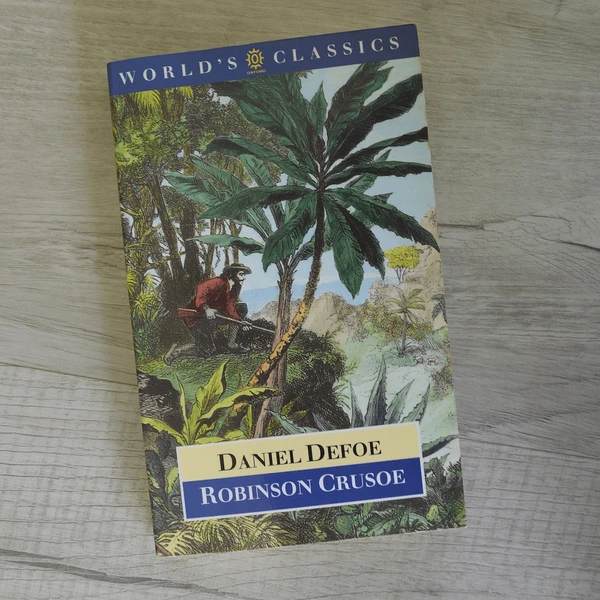
Summary:
Daniel Defoe’s “Robinson Crusoe” is a famous adventure book that came out in 1719. In it, a man survives and has adventures on an island by himself. The book has become a classic in adventure writing and is widely considered one of the first English novels.
Robinson Crusoe, the main character, is a young, impulsive Englishman who goes against what his parents want him to do and becomes a lawyer instead. Instead, he sets out to sea in search of adventure. A run of bad luck follows his choice, ending with a shipwreck that leaves him alone on an island near the coast of Trinidad.
With no one else around, Crusoe needs to find out how to stay alive. He gets things from the shipwrecked ship and learns how to hunt, grow, and make tools. Over time, he builds himself a home that includes a protected shelter and a farm that works. His resourcefulness and drive are the main things that help him stay alive. The book clearly describes Crusoe’s daily struggles and successes as he learns to live alone.
It’s a big change for Crusoe on the island when he finds out he’s not alone. He meets some cannibals and frees a prisoner, whom he names Friday. Friday learns English from Crusoe, who also converts him to Christianity. They become close and work together to stay alive. This relationship is crucial because it shows Crusoe’s need for companionship and his job as a teacher.
A passing ship saves Crusoe and Friday after they’ve been on the island for 28 years. There have been a lot of changes in England since Crusoe last went there. Even though he lives in a modern society, he feels nostalgic and proud when he thinks about the years he spent alone.
“Robinson Crusoe” is more than just a story about surviving; it’s also about how strong people can be, how creative they can be, and how they find themselves. Daniel Defoe’s book looks at the conflict between society and nature, how important it is to be independent, and how being alone can change a person’s mind. There have been numerous adaptations and reinterpretations of Robinson Crusoe’s story throughout the years.
15.”Gulliver’s Travels” by Jonathan Swift
Year Published: 1726
Publisher: Benjamin Motte
Original Language: English
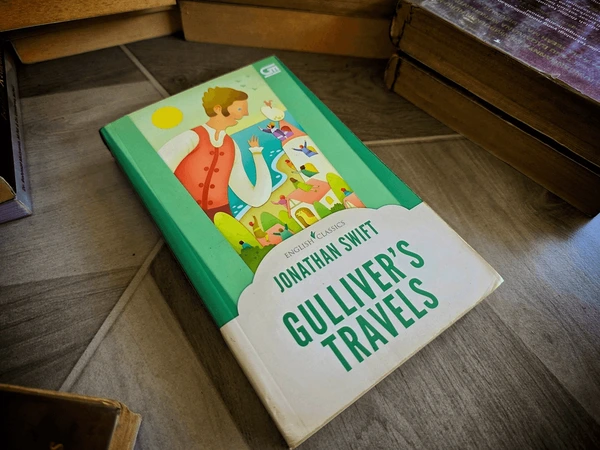
Summary:
Jonathan Swift’s 1726 satire “Gulliver’s Travels” follows Lemuel Gulliver’s excursions through human nature and civilization. It often criticizes politics, culture, and human flaws.
Gulliver, a ship’s surgeon, goes on various adventures to exotic lands. His first adventure takes him to Lilliput, where six-inch people live. Giant gullivers occur there. Swift exploits their petty politics and conflicts to ridicule his own society’s trifling disputes and corruption.
Gulliver becomes the tiny one in Brobdingnag, a land of giants, during his second expedition. This contrast highlights human vulnerability and weakness. Using Gulliver’s descriptions of Europe, the Brobdingnagians examine human morality and reveal its shortcomings.
Gulliver’s third voyage takes him to unusual islands like Laputa, where people love math and music but fail at practical matters, and Glubbdubdrib, where he can summon historical characters. These tales support Swift’s criticism of abstract science and historical distortion.
Final Few Words
Imagine a small treasure chest. It’s not large, but it’s packed with gold. Classic novels under 400 pages are just like that! Books such as Pride and Prejudice, To Kill a Mockingbird, and Wuthering Heights may be brief, yet they are packed with deep emotions, significant themes, and memorable characters. You don’t need a thousand pages to feel love, anger, or adventure—just a great story told well. If you find classics too lengthy or difficult, give these a shot. They’re tiny wonders—easy to hold, yet strong enough to leave a lasting impression. Enjoy your reading!


